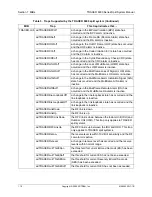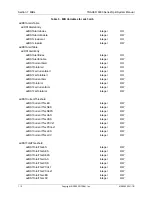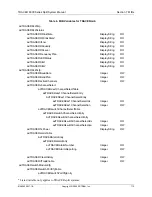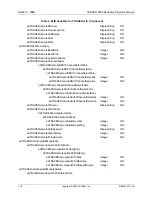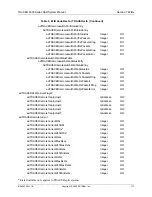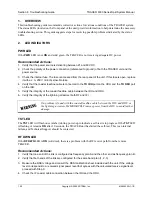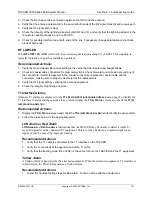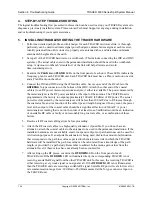
Section 8 Troubleshooting Guide
TRACER 6000 Series Split System Manual
122
Copyright © 2005 ADTRAN, Inc.
612806320L1-1B
Blue Alarm
A remote alarm (alarm indication signal or AIS) is generated by the attached equipment. The root
cause must be determined at the attached equipment. A typical cause of a blue alarm is a lack of input
to a CSU.
Recommended Actions:
1.
Verify the input to any attached data equipment.
BPV
Bipolar violations (BPVs) indicate an improper configuration or faulty wiring.
Recommended Actions:
1.
Verify the TRACER unit and the attached equipment are configured for the same line coding
(
B8ZS
or
AMI
).
2.
Verify the cable connections for the T1 interface are solid.
E1 Interface Alarms
All active E1 alarms are displayed on the
E1
X
S
TATUS
/C
ONFIGURATION
/L
OOPBACK
menu page. To identify
the E1 interface in alarm and the specific alarm present, display the
E1(
X
) S
TATUS
screens and check the
E1(
X
) I
NTERFACE
A
LARMS
field.
Recommended Actions:
1. Display the
E1(
X
) S
TATUS
screen and check the
E1(
X
) I
NTERFACE
A
LARM
field to identify the active
alarm.
2. Follow the steps below for the appropriate alarm.
LOS Alarm (Loss of Signal)
LOS A
LARM
is an indication that the TRACER may be unable to detect a viable E1 received signal
from the connected E1 equipment. This error may be due to a degraded signal or no signal, or may be
caused by improper framing.
Recommended Actions:
1. Verify that the E1 cable is connected to the E1 interface on the TRACER.
2. Verify the connections at the opposite end of the E1 cable.
3. Verify that the framing mode (framed, multiframed, or unframed) is the same for both the
TRACER and the E1 equipment.
AIS Alarm
A remote alarm (alarm indication signal or AIS) is generated by the attached equipment. The root
cause must be determined at the attached equipment. A typical cause of a blue alarm is a lack of input
to a CSU.
Recommended Actions:
1.
Verify the input to any attached data equipment.
LCV
Line code violations (LCVs) indicate that the received E1 stream contains an invalid line code and are
generally caused by an improper configuration or faulty wiring.



